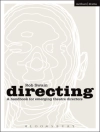A truly groundbreaking collaboration of original theatre history with exciting literary criticism, Shakespeare in Parts is the first book fully to explore the original form in which Shakespeare’s drama overwhelmingly circulated. This was not the full play-text; it was not the public performance. It was the actor’s part, consisting of the bare cues and speeches of each individual role. With group rehearsals rare or non-existent, the cued part alone had tofurnish the actor with his character. But each such part-text was riddled with gaps and uncertainties. The actor knew what he was going to say, but not necessarily when, or why, or to whom; he may have known next to nothing of any other part. It demanded the most sensitive attention to the opportunitiesinscribed in the script, and to the ongoing dramatic moment. Here is where the young actor Shakespeare learnt his trade; here is where his imagination, verbal and technical, learnt to roam. This is the story of Shakespeare in Parts. As Shakespeare developed his playwriting, the apparent limitations of the medium get transformed into expressive opportunities. Both cue and speech become promise-crammed repositories of meaning and movement, and of individually discoverable space and time. Writing always for the same core group of players, Shakespeare could take – and insist upon – unprecedented risks. The result is onstage drama of astonishing immediacy. Starting with a comprehensive history of the part in early modern theatre, Simon Palfrey and Tiffany Stern’s mould-altering work of historical and imaginative recovery provides a unique keyhole onto hitherto forgotten practices and techniques. It not only discovers a newly active, choice-ridden actor, but a new Shakespeare.
Simon Palfrey & Tiffany Stern
Shakespeare in Parts [EPUB ebook]
Shakespeare in Parts [EPUB ebook]
Dieses Ebook kaufen – und ein weitere GRATIS erhalten!
Sprache Englisch ● Format EPUB ● ISBN 9780191608452 ● Verlag OUP Oxford ● Erscheinungsjahr 2007 ● herunterladbar 6 mal ● Währung EUR ● ID 2505579 ● Kopierschutz Adobe DRM
erfordert DRM-fähige Lesetechnologie












